The best mountain bike goggles will protect your eyes from dirt, dust and water, enabling you to keep your attention locked on the trail ahead.
Some also provide UV protection, to help keep you from squinting on bright, sunny days, as well as fending off damage from the harmful rays.
While it's not uncommon to see riders using goggles with trail mountain bike helmets, they are more widely adopted by gravity-fueled disciplines such as enduro and downhill.
In this list, we have put together our top-rated mountain bike goggles that we think are worth your time and money.
We have also included a mountain bike goggles buyer’s guide at the bottom of the page that includes things to consider before purchasing a new pair.
Best mountain bike goggles
100% Armega
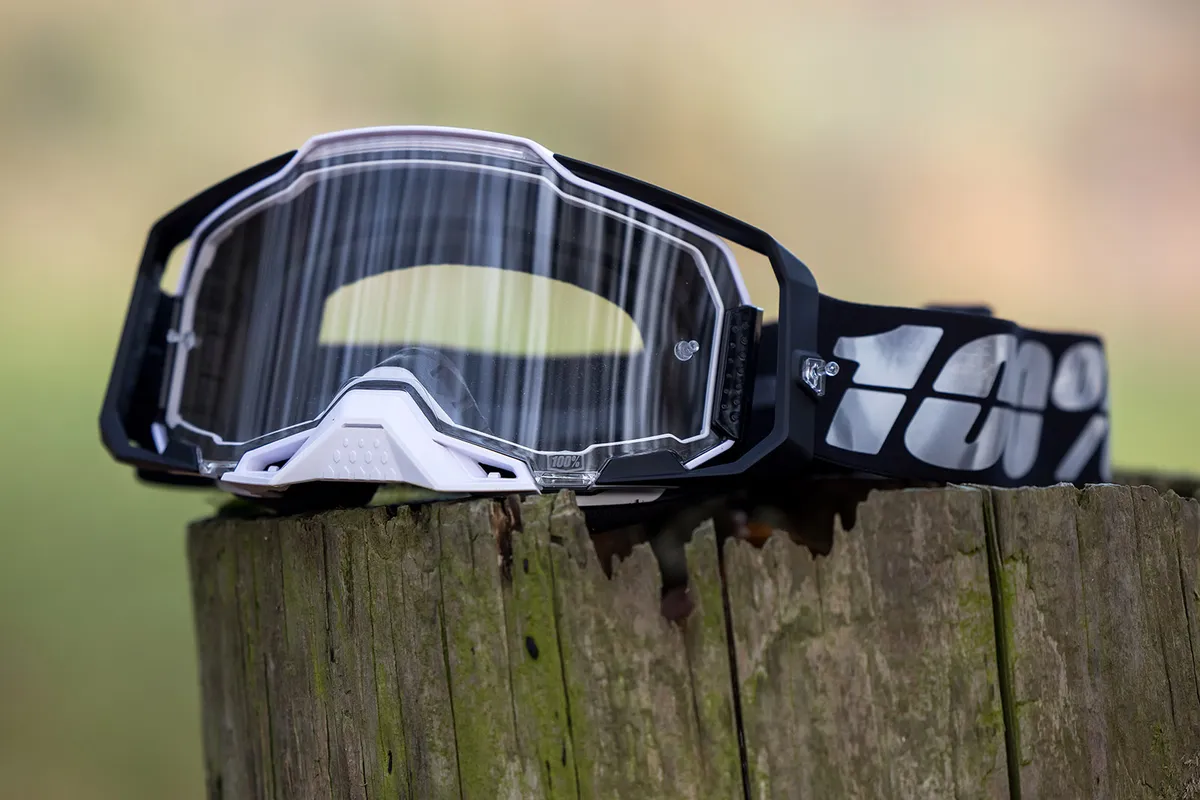
- £99.99 as tested
- Pros: Comfortable; clear optics; superb anti-fog performance
- Cons: Costly; additional accessories would be nice
The Armegas' semi-rigid, shaped design offers great comfort and even when they’re pulled tight they don’t pinch your nose.
They aren't as wide as some others, meaning they fit comfortably with a wide range of helmets, but this is well balanced with a generous field of view.
We found the lens optics to be superb, with no reflections, distortions or a lack of clarity in a wide range of light conditions, from dark to super-bright.
The anti-fog was effective too, with it taking a long time for the perspiration to build up on the inside when stopped.
We found the omission of tear-offs or a spare lens to be a drawback considering the price tag.
Leatt Velocity 6.5
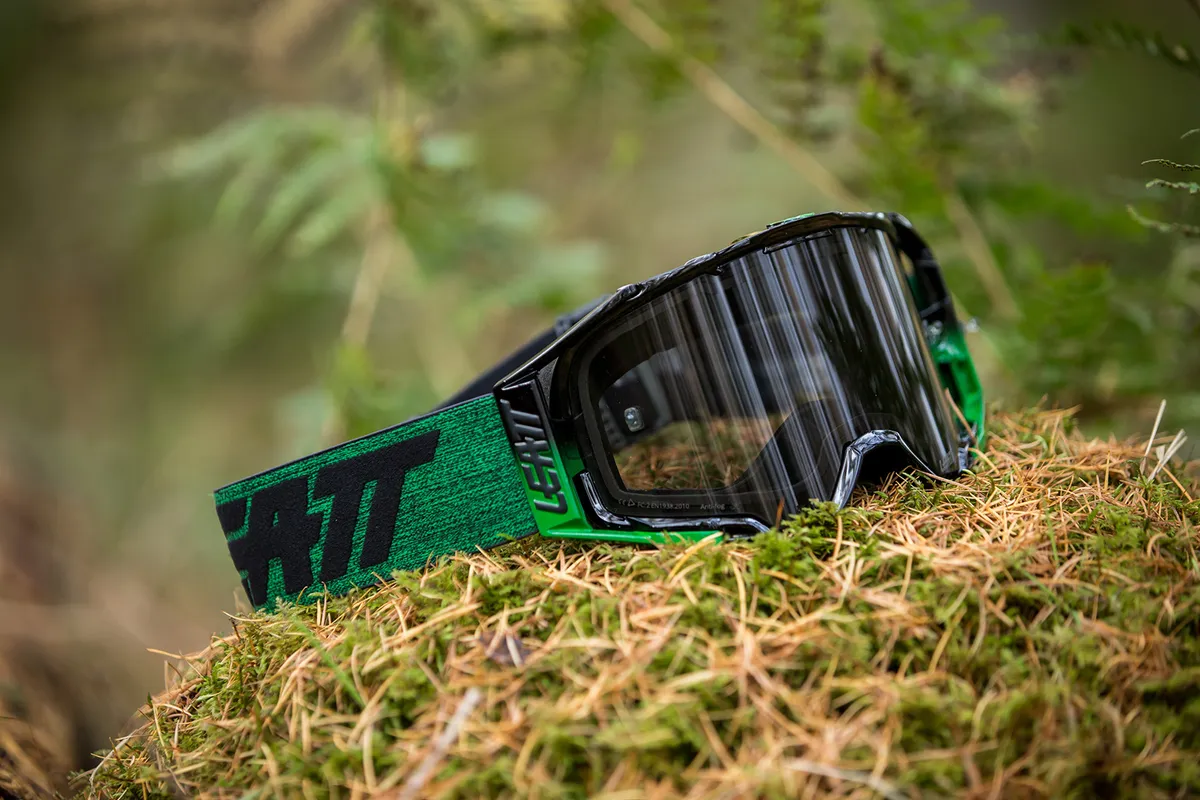
- £73 / $89.99
The Velocity 6.5 goggles from Leatt are comfortable and refused to fog up despite extreme conditions.
A range of well-priced lenses is available to fit these frames, and swapping from the dark tint that comes as standard is an easy process. It's a shame these don't come bundled with a clear lens, though.
The frames worked well across a wide range of helmets including open-face designs, such as the Troy Lee A1.
The tighter-than-average fit might not suit everyone.
Oakley Airbrake MTB
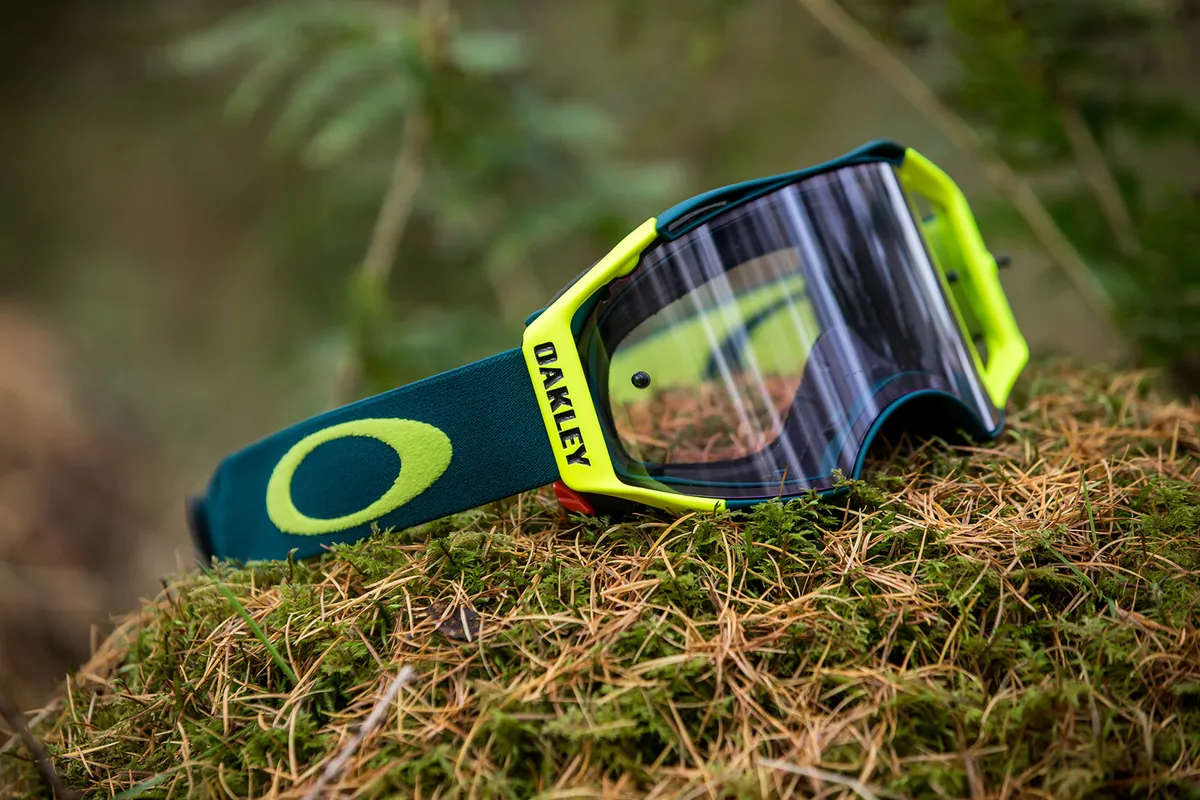
- £163 / $180
The Airbrake MTB is a mountain bike-specific goggle from optics giant Oakley.
They're an especially comfortable and well-ventilated design, plus we think they look great.
We loved the supplied light pink lens which enhanced contrast in low light situations and also dealt well with bright conditions – a genuine year-round solution.
We had no issues with the fit with open- and full-face helmets, and found the luxuriously soft foam was comfy even when drenched in sweat.
Unfortunately, the superbly clear, distortion-free lenses did have to be kept spotlessly clean to prevent fogging up.
You'll also have to have very deep pockets.
SixSixOne Radia

- £40 / $39.99 as tested
- Pros: Lightweight; comfortable; price; anti-fog performance
- Cons: Tinted lens limits potential
The Radia goggles' lens employs a traditional push-fit design, which uses the frame’s flexibility to make fitment and removal easy. However, it requires plenty of manipulation that can leave greasy finger marks on the lenses.
We found the tinted, mirrored lens to be best suited to open trails in bright light, where it dampens glare and dazzle well.
The optics are good, with no perceptible distortion or reflections even when looking almost directly into bright light sources.
They feel comfortable and don’t pinch your nose, with the modest frame size sitting within a range of helmets well and not limiting field of view.
Anti-fog performance is commendable, even in extreme conditions, only steaming up briefly when stationary on cold and damp days.
Brand-X G-1 Outrigger

- £24.99
No, the price is not a misprint. Brand-X is known for making budget kit that performs well and these goggles are no exception.
The fit was fine will full-face lids but we did find their depth made them fit significantly less well with open-face helmets.
We had no issues with the optics of the standard clear lens and it's great to see a tinted, yellow and additional clear lens are sold in a pack of three for just £10.
The goggles were clear while moving but their tight fit and thick foam make them very susceptible to fogging, particularly after hard efforts.
Brand-X chose not to make tear-offs for these goggles but the supplied goggle case wiped away any moisture well and didn’t appear to scratch the lens.
If you can live with the fogging then these remain a decent pair of goggles at a great price.
Fox Vue
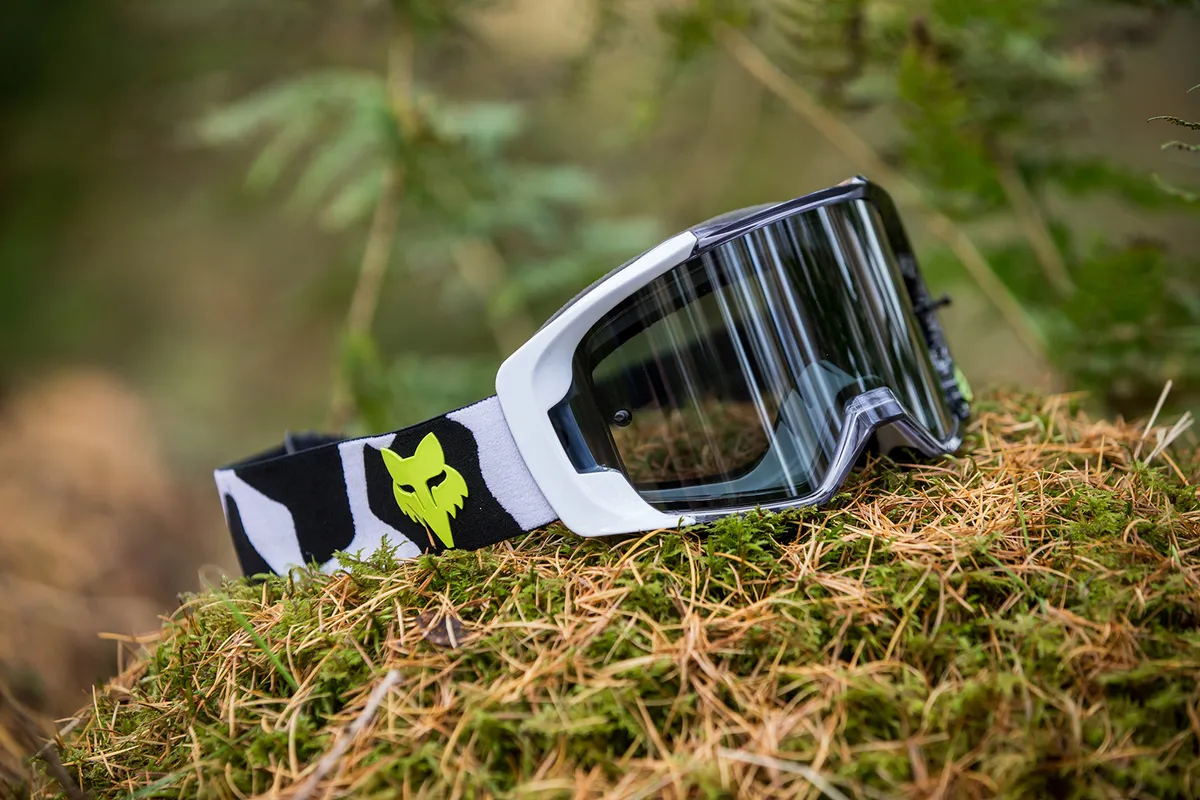
- £105 / $130
The Vue goggles from Fox have decent optics and are comfortable on the face, it's just a shame that they don't come packed with a clear lens.
For those usually riding in the bright or open, the standard tinted lens works well, but if you're in shaded woodland you'll need to stump up an additional £16 for a clear or coloured replacement.
Our tester had no issues with these when paired with a number of popular full-face helmets but did find them a tight fight when worn with open-face lids.
The frames do breathe well and are good at resisting fogging in all but the most extreme conditions. When they did mist up we were able to quickly rectify the situation with a wipe with the supplied goggle bag.
Oakley Front Line MX

- £106 as tested
- Pros: Anti-fog performance; comfort; impressive optics
- Cons: Frame size; cost
Oakley's Front Line MX are some of the best goggles on the market for field of vision, with the frame completely out of sight on the peripheries.
The over-frame lens removal is straightforward, making it easy to interchange lenses for varying weather conditions. However, frame manipulation is required, which leaves fingerprints on the lens if you're not careful.
Regardless of the light conditions – whether that’s harsh sunlight or dark woods – the lens is supremely clear and sharp, reducing eye strain.
The voluptuous foam is soft and squishy, and the strap doesn’t need to be cranked right up, so they stay in place over particularly rough terrain.
Their fog resistance is great. Even in extreme conditions, such as highly humid days mixed with a sweaty, hot rider, they refuse to totally mist up.
When stationary for long durations, mist forms on the edges of the lens, but this clears quickly once you’re moving.
The Front Line MX goggles are fairly large and in smaller helmets, such as MET’s Parachute MCR, some adjustment is required to get them sitting correctly.
Scott Fury

- £65 / $70
When it comes to its Fury goggles, Scott has put much of the styling and functionality of its more expensive model into a budget package.
These fitted well on all helmets we tried them with, including full- and open-face designs.
The optics are great with a wide field of vision and great clarity. It's also excellent to see a clear lens included as well as the orange mirrored, blue tinted lens.
They also breathe really well and are some of the best performers when it comes to anti-fogging.
It's a shame that Scott doesn't bundle them with a cleaning cloth or a carry bag, particularly considering the price.
Smith Rhythm MTB

- £95 / $80 as tested
- Pros: Anti-fog performance; clear optics; great fit; lightweight
- Cons: Costly
The contoured shape of the Rhythms and their spacious nose bridge means they don’t pinch even when the strap is pulled tight.
We found the wide and deep frames helped limit reflections and provided impressive uninterrupted peripheral vision, but the generous field of view doesn’t equate to bulkiness.
Fog resistance and airflow are impressive, even in extreme low temperature and high-humidity scenarios.
The fully open frame lets air travel freely behind the lens, clearing any foggy build-up quickly.
Smith's optics are impressive; we found no distortion, glare or off-putting reflections.
Some riders might dislike the abundant airflow across their eyes and face, and some debris and water splashes can make their way inside the goggles on overgrown trails.
Also consider…
These goggles didn't score above the 4-star threshold to be considered a best buy, but you may still want to consider them.
Fox Airspace X

- £69.99 as tested
- Pros: Exceptional anti-fog performance; high levels of comfort are exceptional
- Cons: Double-glazed lens can cause reflection in some light conditions
The Airspace X's double-glazing design is truly impressive at preventing fog in harsh conditions, even with very little airflow when you’re stationary at a trailhead.
In low-light conditions, there’s plenty of clarity with undistorted optics and good definition, although the double glazing can add a holographic illusion to backlit displays.
To fit the lens, plenty of manipulation is needed, resulting in lots of greasy fingerprints and smudges on both its exterior and interior.
They’re very comfortable, helped by their curved, relatively stiff shape that doesn’t squash or deform as the strap is pulled tight, helping reduce nose pinching.
The frame’s edges and the lens’s foam separator can be seen in your peripheral vision, potentially being distracting.
Smith Squad XL MTB
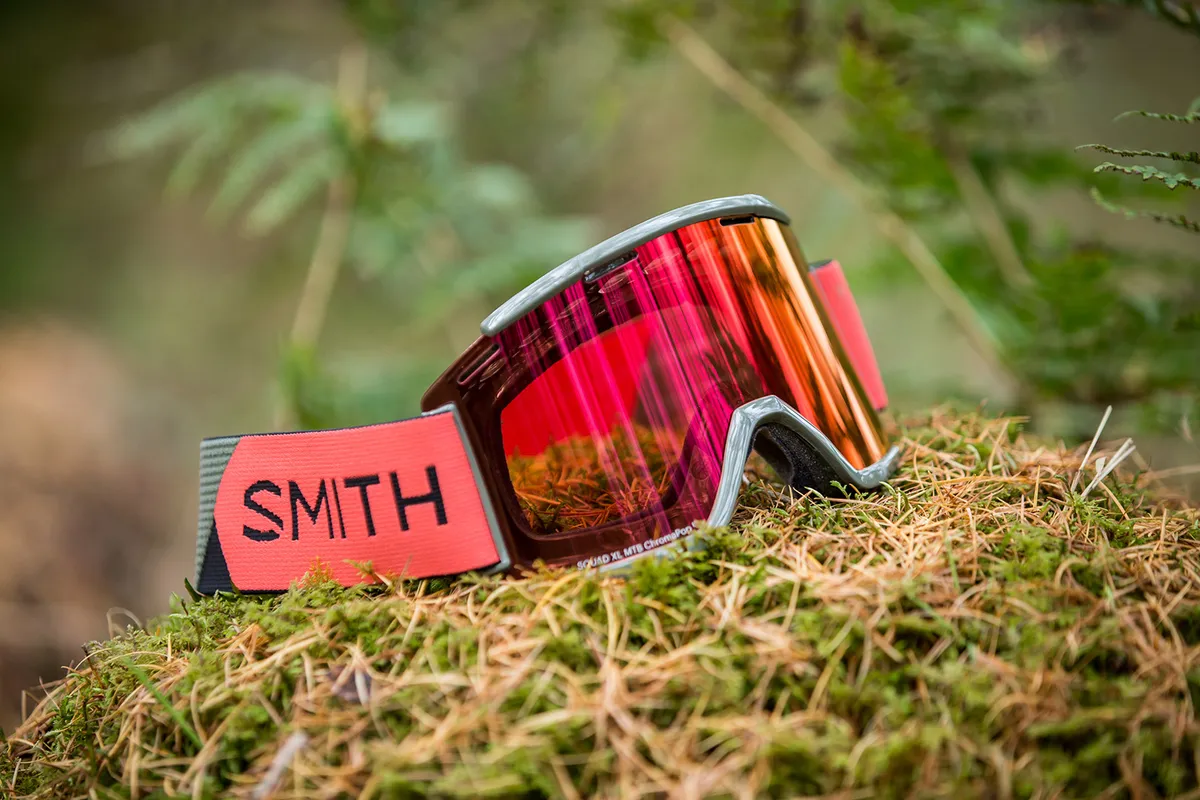
- £90 / $85
These Smith goggles use open ventilation ports around the circumference of the frame. Normally these vents are covered by foam or mesh material, but the Smith’s are open.
The idea is the vents should eliminate fog by increasing air flow. The reality is they do provide fantastic ventilation, but unfortunately the vents mean that sweat, water, condensation and rain dripping from the helmet and its pads get inside the goggles.
Optically these were great and we found the two supplied lenses were useful for a range of conditions. They aren't easy to change though, at least not compared to others on this list.
At its most extreme, drips would run down the inside of the lens, and riding had to stop in order to clean them.
They felt a little small in certain full-face helmets but did work particularly well with open-face designs.
We can't recommend them for autumn or winter riding but on hot summer days they will perform well.
Mountain bike goggles buyer's guide
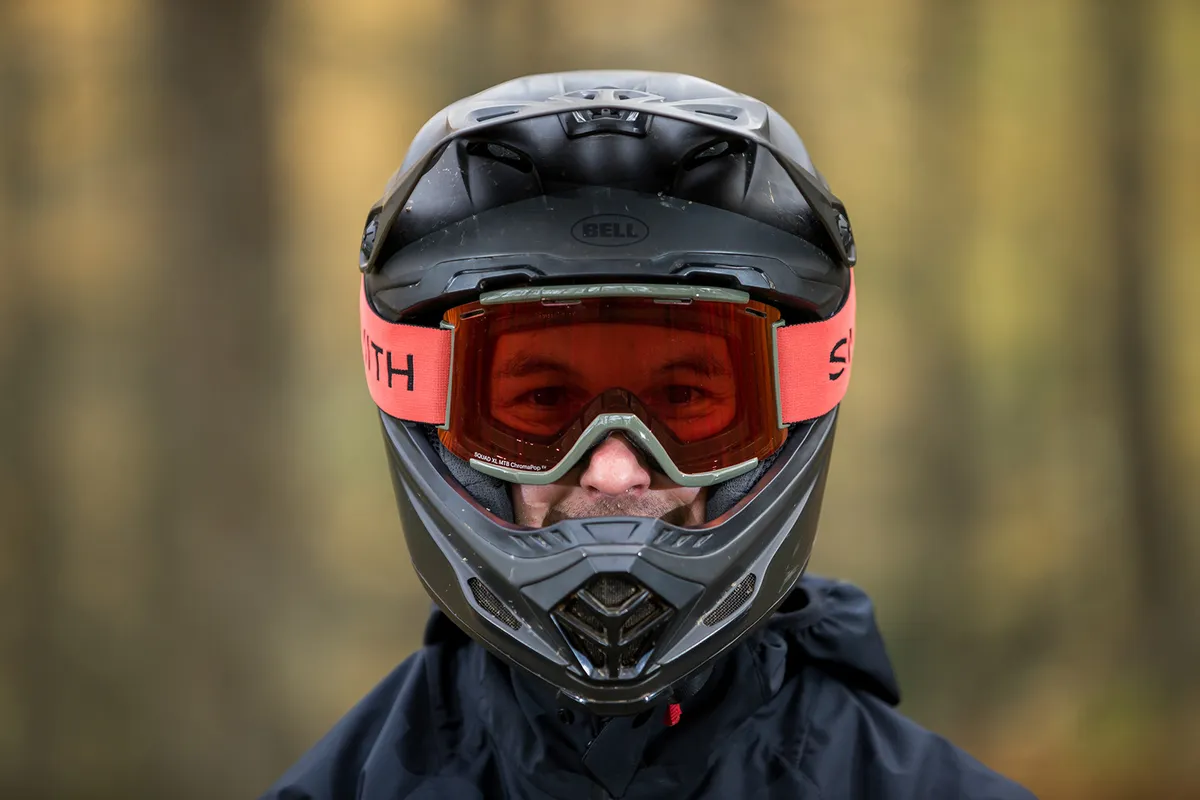
The best mountain bike goggles are lightweight, comfortable and feature a large, fog-resistant lens for a wide field of view.
They should also work well with full-face or open-face helmets, providing a secure seal and preventing dirt, water and debris from entering.
Predominantly used by enduro, downhill and bike-park riders, MTB goggles are a good option for anyone looking for the highest level of eye protection while riding.
Mountain bike goggles features
Frame type

The frame is the part of the goggles that holds the lens. There are a few different designs to consider.
Open or covered vents
Commonly made from flexible plastic, mountain bike goggles have vents at the top and bottom to improve airflow and prevent fogging.
Some goggles have foam-covered vents. This effectively seals the goggles and prevents dirt or moisture from sneaking in behind the lens. However, it also limits the effectiveness of the vents and makes fogging more likely.
Open-vented goggles do away with the foam covering and offer greatly improved fog resistance, but they aren’t fully sealed from the elements.
Which type of goggle frame you choose should depend on the conditions you ride in. If you often ride in damp and humid conditions, open-vented goggles will be a better choice due to their improved ventilation.
If you ride in dry climates, where fogging isn’t an issue, you have the option of going for a foam-sealed frame if you desire extra protection.
Foam density
A foam layer provides the contact point between your face and the goggles. The best mountain bike goggles employ dual- or triple-density foam for maximum comfort.
Lens type
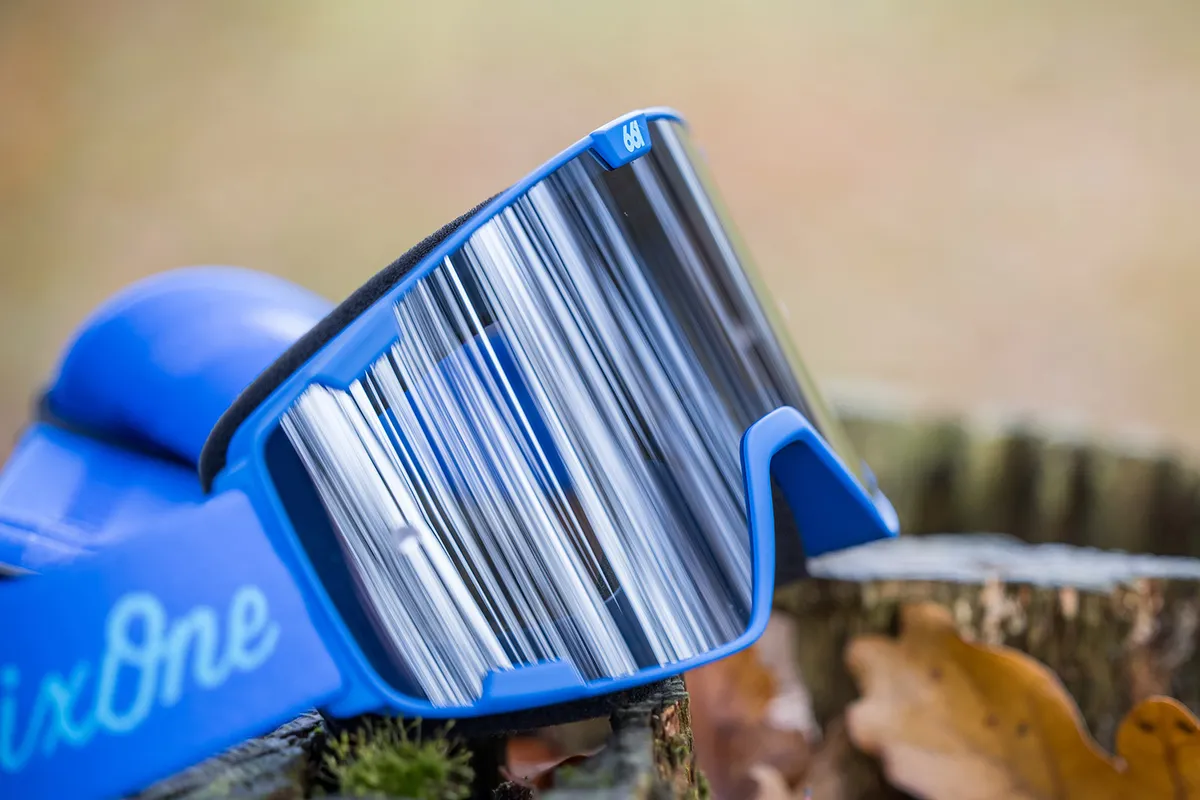
The best MTB goggles feature interchangeable and replaceable lenses, enabling you to swap lenses for different weather conditions or replace a lens that has become scratched or damaged.
Pre-curved or flat lenses
Once installed in their frame, goggle lenses curve across your face. Many lenses are cut from a flat sheet of polycarbonate and curve as they are installed in the frame. These lenses are often cheaper.
Some premium lenses are pre-curved, meaning they don’t rely on the goggle frame to hold their shape. Pre-curved lenses are claimed to have better optical performance, benefitting from reduced distortion compared to flat lenses.
Clear, shaded or reflective lenses
Most MTB goggles will come with two lenses: a clear lens and a shaded lens.
Clear lenses are the best choice for most riders, offering unaffected vision in darker conditions or in woods. If you ride somewhere sunny and are often affected by sun glare, shaded or even mirrored lenses may be helpful.
Goggle straps
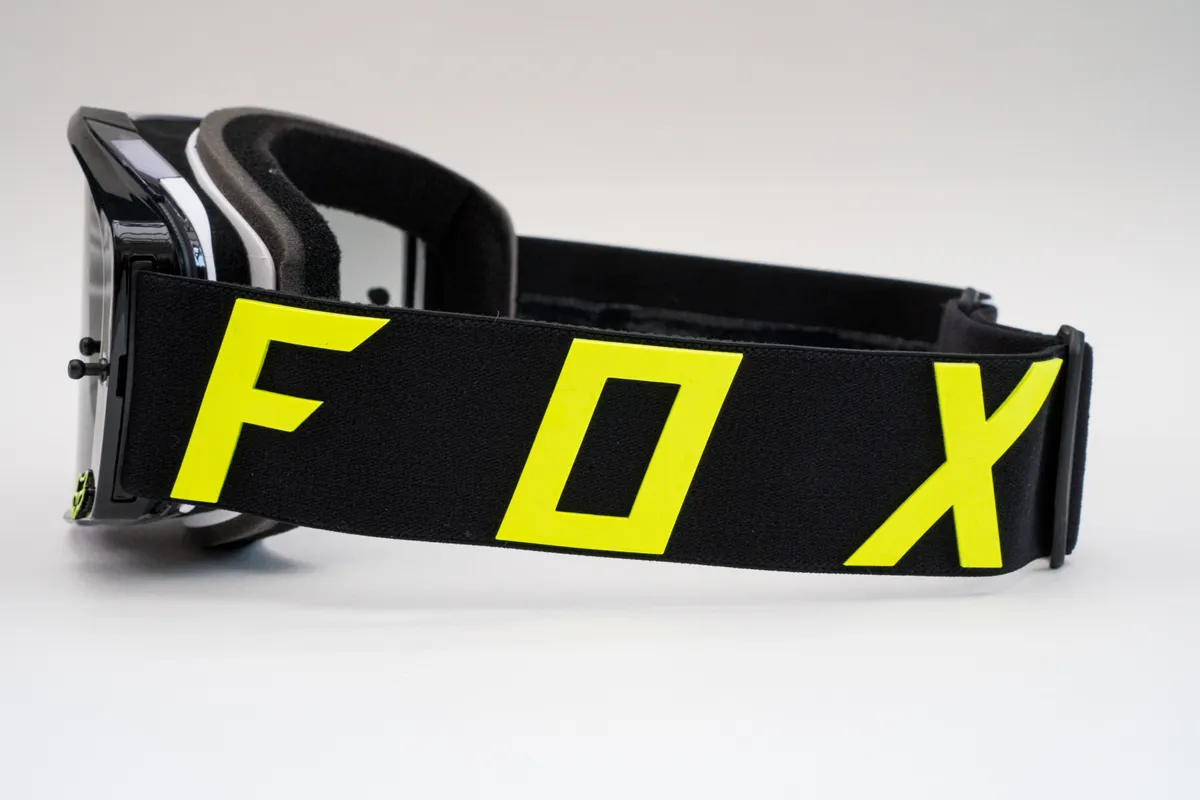
The goggle strap secures the goggles and prevents them from slipping. The best goggles have a broad, elasticated strap with silicone gripper strips. It’s important to make sure the strap is adjustable to fit around your helmet.
What are mountain bike goggle tear-offs?
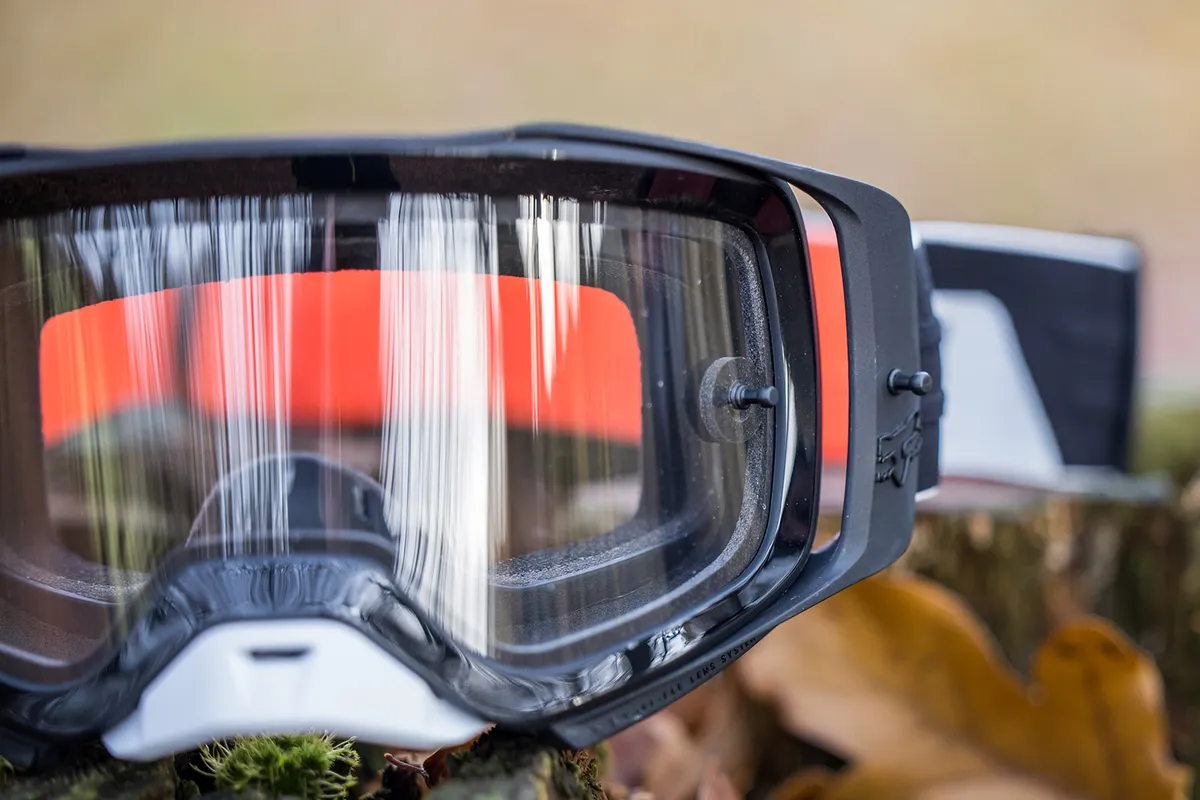
Tear-offs are thin plastic covers that sit on the goggle lens. When the lens gets splashed with water or mud, the tear-off can quickly be removed while riding, clearing the lens and revealing a fresh tear-off underneath.
Tear-offs were popular with downhill racers, who depended on clear vision in their race runs. However, due to the polluting nature of the design, tear-offs have been banned in many bike parks.
MTB goggles vs glasses
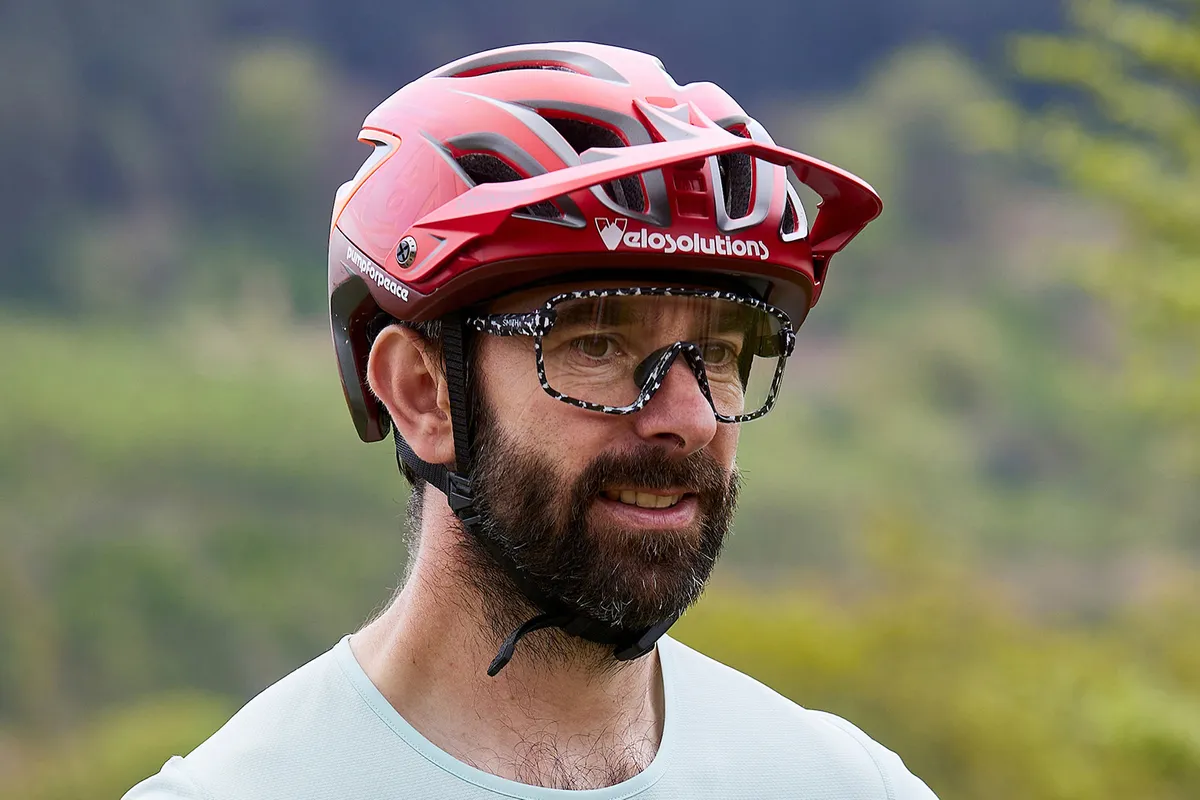
There are pros and cons to both goggles and glasses for mountain biking. With their superior coverage, goggles are useful for enduro and downhill racers or bike park riders who are happy to sacrifice a bit of weight for maximum eye protection and vision.
However, they are bulkier to store while pedalling and prone to fogging up in humid conditions, especially after a sweaty climb.
The best cycling glasses, on the other hand, are lighter and more packable than goggles, while still offering good coverage and excellent clarity. However, they lack the sealed fit of goggles and there’s a higher risk of mud or splashes getting behind the lenses.
How much do mountain bike goggles cost?
Pricing for mountain bike goggles starts at around £30 / $40. At this price point, expect a flat, clear lens, single-density foam and a narrow strap.
If you like, you can pay upwards of £100 (around $130) for mountain bike goggles. As prices increase, you will start to see pre-curved lenses, dual- or triple-density foam and wide goggle straps.


